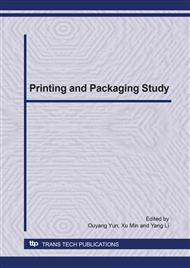p.506
p.510
p.513
p.517
p.521
p.525
p.533
p.537
p.541
Typeface Innovation and Information Communication of Latin Alphabet from Handwriting to Printing
Abstract:
Characters play important function in social development. It is not only the carrier of language, but also the basis of informationized society. For Latin alphabet, there are primitive character period, classical character period and alphabetical character period from the primitive characters to alphabetical characters. Every formal change of the character accelerated the speed of information transmission while keeping their historical traces. The writing tools and carriers of different times, as a kind of media, direct the transmission of information and directly influence the typeface of characters and communication of information. The invention of Gutenberg brings major technological innovation, printing oil and paper became new carriers of characters, which were widely promoted worldwide and various Latin alphabetical characters came into being gradually. Font disk share the same form and their reoccurrence greatly promoted the level of identification and the normalization of printing characters came into being. As a result, the readability and legibility of printing characters is superior to that of handwritten characters. So that information can be more clear and accurate delivery and better realization of its functional significance. Printing characters plays more and more important roles as carriers of information with the development of information society and their role in conveying information would arouse more concern and deeper research.
Info:
Periodical:
Pages:
541-544
Citation:
Online since:
December 2010
Price:
Сopyright:
© 2011 Trans Tech Publications Ltd. All Rights Reserved
Share:
Citation:


